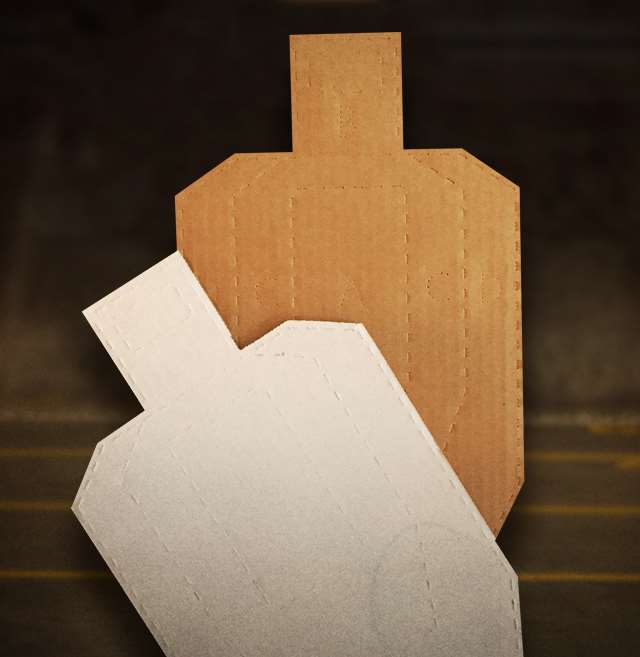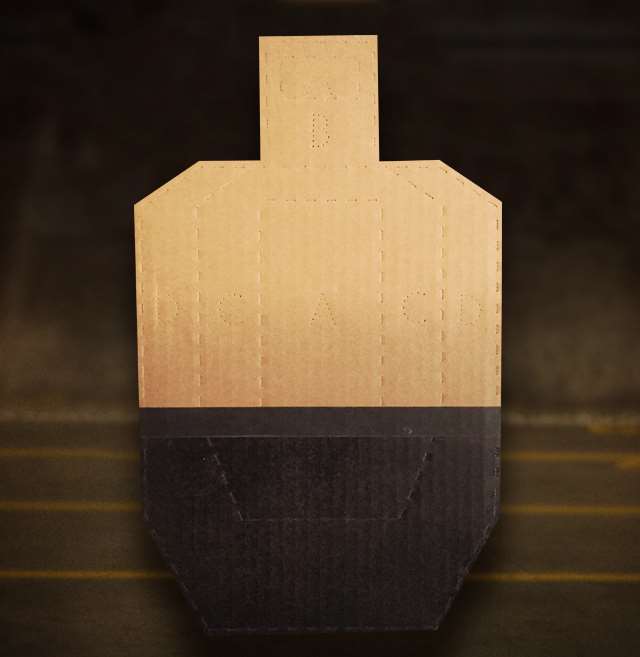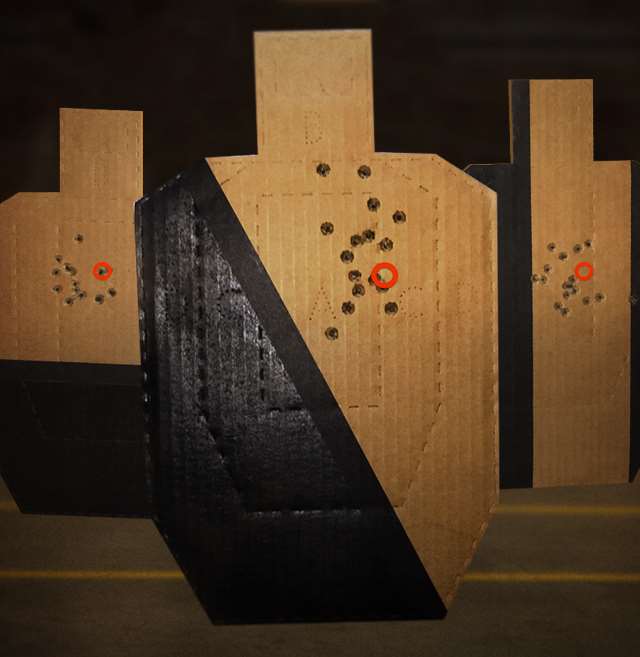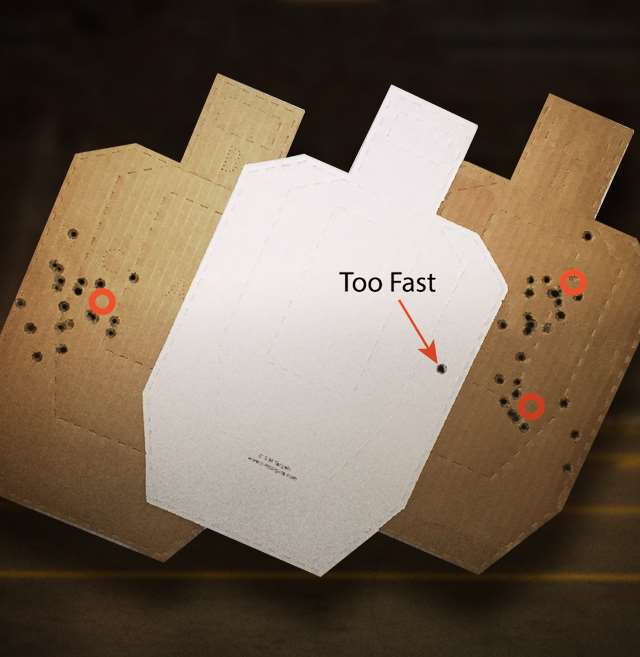
We’ve observed that there is an important difference between making an excellent shot when you wish, versus a satisfactory shot when you must. An obvious corollary is that there’s little consequence to missing the first, but a mistake with the second may be quite another matter.
A special case of this second type is what you’ll sometimes hear called a “danger” target, though not in the sense you might initially expect. Danger here is in the sense of consequences: A target gets more and more dangerous as the consequences of a miss on it increase.
If you shoot mostly under traditional range “lane” conditions and at bull’s-eye targets, this is a simple problem: Circular error is the whole name of the game. But if you’re in a tactical or speed discipline—say IDPA, USPSA or Steel Challenge—you don’t just reduce your score by points “missed.” Make-ups add time in all three, and if your miss is bad enough in some, they put you into punishing negative/penalty scoring (hitting a no-shoot target, for instance). In IDPA and USPSA particularly, the danger target presents a third problem: A sufficiently devious match director can make it so you never see the same danger target twice. Try practicing that. Granted, it’s all for fun, but if you compete to improve your defensive handgunning, too, “danger” target skills—and consequences—magnify dramatically.

We therefore posit that acquiring some danger target technique isn’t merely a good idea, but borders on an obligation.
There’s some good news to encourage you at the start, however: This isn’t a labored accuracy technique, though if you’re a precise shooter there’s no downside to what we will suggest. If you struggle a bit with accuracy but don’t want to surrender those hard-won quick follow-ups, you’ll benefit plenty as well. Just crank down the speed until those sights are really back on the aim point.
Next, you won’t need special targets. We think cardboard USPSA or IDPA targets hold up best for the “masking” technique that marks the “no shoot” areas, but photo-realistic or silhouette targets are fine, too. Take a look at our samples, and you’ll see cardboard targets and some colored spray paint are all you need. (Our taped demarcations are only for photographic clarity.) If you use silhouettes/photo targets, butcher paper does nicely to create the “no-shoot” areas.
Our goal isn’t that complicated, either. Basically, it’s a slight perceptual rewire of what you’ve been doing since day one in your shooting life: Letting the brain and eye work together to find shapes that “nest.” For instance, nesting smaller sights inside the larger target, and the more geometric or “regular” those shapes are, the better. Sights—and many targets—facilitate this hunt for regularity with a host of edges and corners, vertical and horizontal lines, and the easiest of all—concentric circles. When all goes well with this nearly unconscious alignment process, the result is a hit in the center of your target.

Therein lies the problem with the so-called danger target: Due to their proximity to things that shouldn’t be hit, they acquire shapes the eye/brain targeting system finds much more challenging. Our reflexive centering shortcut doesn’t work nearly as well. Instead, an aim point must now be “calculated” to balance hit quality and shot speed against the risk of a miss (or hits on non-targets), and a new sight picture constructed for every shot. It sounds slow, because it is. It sounds error-prone, because it is.
As with so many other things, the only way to get better at it is to teach our brains a new way to respond. If you look at our photographs, you’ll see a few classics, dressed up in “hard cover” fashion a la USPSA.
Half Cover
This is relatively easy, because there are still strong vertical cues at the edges of the target area and, if you’re close enough, the perfed-in “A” may provide a precise and near-centered aim point. Use it if you can see it. Still, it’s a good place to start, though if you shoot it side-by-side with an open target, you’ll generally find your shot cluster moving up a little, barring other error. This is the easy “version” of the target: If you move the masking to the top of the “A,” you generally notice a significant increase in “C” hits as the computed center and aiming point moves up, and a surprising number of “nicks” at the corners of the neck, some of which will score, but others of which will be outside the perf (and be misses).
Slash Right

Unlike half-cover, your constructed center aim point is probably out of the “A” zone on this target, though only slightly. Still, there’s a lot of open real estate, and you can score well. Our aim point here is about three-quarters up the body, and on the A/C line. As you try and go faster, this is the “slash” that fouls up right-handed shooters unless they are very disciplined about watching the sight all the way through recoil. Just a little undue haste will put the second shot low and/or left, and into the hard cover. (Lefties generally detest slash left for similar reasons.)
Off-Center Stripe
This is classic pattern for cover (simulating a presumed bad guy looking through a doorway at you), and harder than it looks. Clusters of shots can stay fairly tight even at reasonable speed on this configuration, up to the point you transition in or out too rapidly—the hard verticals will make you pay. Up and down, there’s a lot of room for error, and overconfidence is easy to come by. Our aim point here is between the perfed “A” and “C.” Mount this target at an angle, and it’s even better practice.
No Shoots

Although they can be trickier to physically post (especially on indoor, lane-oriented ranges), these “innocent bystanders” can really mess things up. As a consequence, they’re probably the best practice of all. Consider that with just three targets—two “shoot” and one “no-shoot”—how many different target area shapes you can create. You’ll also get scenarios where there’s a choice to be made: There may be two “centers” to choose from to make your shot(s). Start putting them at angles, and you’ll be cussin’ in no time. You’ll also get better in no time.
We much prefer to practice on two (or more) of these at a time. There’s a simple reason, which you may have deduced: Working on just one makes that pattern the “new normal,” and is not the rewire we are after. Better still are three, two with some pattern, and one without. Shot in a varied order, you teach yourself the second crucial danger target skill, that of pace or tempo adjustment.
This develops as you learn to make a very rapid appraisal of the dangers of any pattern/shape as the eye first encounters it. You slow as much as the new target complexity requires, and speed up again when the target solution simplifies. Listen to a really good shooter address targets of mixed complexity, and you’ll hear the slight tempo changes they’ve mastered.
That’s what you’re after.
(If your practice space is small or you’re indoors, these targets will help. They’re half dimension, and simulate longer shots at a 4:1 ratio. You can contact C&M Targets directly using this link.)

































